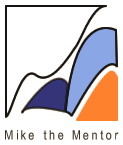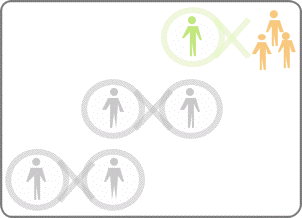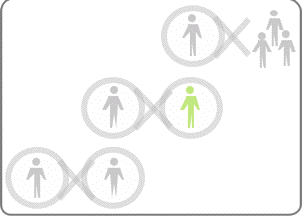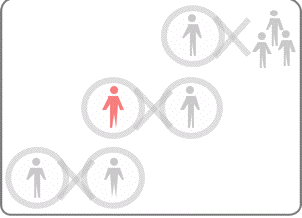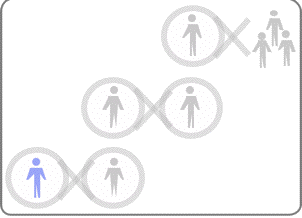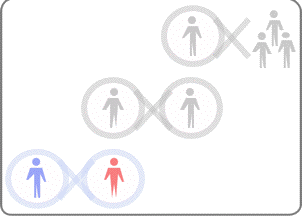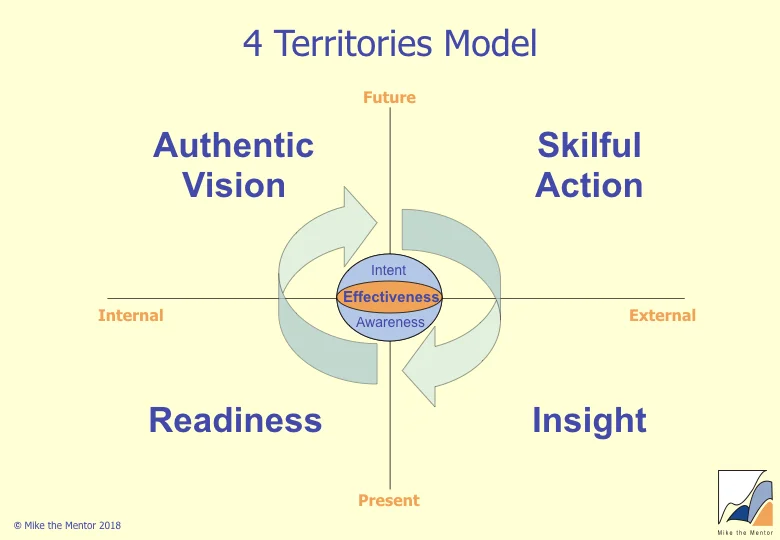The 3W4T Model of Supervision
/This is a chapter I wrote for the book Coaching and Mentoring Supervision: Theory and Practice. You can download the pdf here, or read the article below. Or you can download the slightly updated chapter from the 2nd edition here.
Introduction
Awareness of self and other is at the heart of all coaching supervision, for both supervisor and coach, just as it is at the heart of all coaching. But what do we need to be aware of in our selves and in the other?
The 7-Eyed Model (described in Hawkins and Smith’s Coaching, Mentoring And Organizational Consultancy: Supervision, Skills And Development) provides one map of what we can attend to. In developing this model Hawkins and Smith took a research-based approach, reviewing different models of and approaches to supervision to develop a map of where people in the different approaches put their attention. I have found this model very helpful in directing my attention across the broad landscape of the supervision domain.
However, after using the model for some time, I found that the model had some limitations and so started to modify it. I found it helpful to split Mode 4 (the coach's experience) into what the coach was experiencing in the coaching session itself, and their experience in the here and now of the supervision session. Similarly I found it helpful to distinguish what the coachee was experiencing in the coaching session, and what was going on back in their life outside the coaching session (together represented in the 7-Eyed Model as Mode 1, the coachee system).
Also, the more experienced I became as a supervisor, the more I found myself needing to make finer distinctions about the individual players' experiences. I already had developed a model which provided exactly these distinctions which I increasingly incorporated into my supervision practice. I first wrote about this model over 15 years ago ("Executive Mentoring" in Counseling at Work, Spring 1996, pp 5-6) and it appears in various forms throughout this website (eg as a short overview here).
This chapter describes the resultant coaching supervision model. It aims to help the supervisor bring the coaching session live into the supervision session, raise the coach's awareness, and so enable the coach to have new options in their coaching.
Function of the Model
Coaching Supervision is generally seen to have three functions:
Resourcing - helping the coach manage the coachee emotions which they pick up when working with coachees
Development - developing the skills, understanding and capacities of the coach
Qualitative - ensuring the quality of the coach's work.
The model presented here focuses on the third of these areas - and in particular on improving the quality and effectiveness of specific coaching relationships and interventions by helping the coach have new choices in their client work. However, in focusing on the Qualitative aspects, the model also leads the coach into exploring and engaging with the Resourcing and Development issues they face.
This model is based on the belief that, by getting the whole system live in the room, the supervisor can tune into the wider system and use the thoughts, feelings and other experiences that arise to provide insight into the coaching, the coach and the coachee. The system here is considered to consist of the supervision session itself, the coaching, the coachee and their workplace, as well as the supervisor and the coach. Getting the system into the room refers to evoking and bringing into awareness all these aspects either directly because they are happening in the moment or indirectly because they have been evoked through the memory, imagination and intuition of the supervisee and supervisor. The model provides a map of this system to help the supervisor direct their attention and that of the supervisee to all the relevant elements of the system.
The 3 Worlds 4 Territories (3W4T) Model
The 3W4T model describes the three ‘worlds’ the supervisor can attend to - the coachee’s world, the coaching session, and the supervision session. Within each of these worlds, the supervisor can attend to four territories of experience for each of the players involved (themselves, the coach, and the coachee). The four territories are Insight, Readiness, Authentic Vision and Skilful Action.
The 3 Worlds
Effective supervisors ensure that they attend to what is happening across the whole Supervisory System. To do this they pay attention to 3 sub-systems or 'Worlds':
The Work World - which consists of the coachee in their workplace and wider life;
The Coaching World - which consists of the coach and coachee in the coaching session. Like the Work World, the supervisor has only indirect experience of Coaching World, either through what the coach tells the supervisor overtly or through what is unconsciously evoked in the supervisor;
The Supervision World - which consists of the supervisor and the coach in the supervision, and which the supervisor has direct experience of (because of course they are part of it!).
These worlds are linked together in two principal ways:
By the coach, who is present in the Coaching World and the Supervision World. It is they who bring the coaching world into the supervision session (and so provide the content for the supervisor to work with). It is they who then take the shifts they make and the insights they have back into the coaching session.
By the coachee, who is present in the Work World and the Coaching World. They bring their experience of the work world into the coaching session in order to explore the challenges they face (and so provide the content for the coach to work with). They then take the shifts they make and the insights they have back into the workplace.
These linkages create resonances between the worlds which lead to aspects of the Coaching and Work Worlds being present within the supervision session. So when the coach enters the supervision session, they bring with them a whole network of conscious and unconscious knowledge, feelings, imaginings, perceptions, needs, desires and intuitions about what happened in the coaching and back in the coachee's world. By encouraging and amplifying these resonances, particularly those that the coach is unaware of, and by developing sensitivity to them, the supervisor is able to access information about, and generate insight into, what is occurring in the coaching session and the coachees world. This information and insight can then be used to help the coach gain insight and develop new choices in their coaching work.
A Model of the Person
The experience of each of the individuals involved (supervisor, coach, and coachee) can be represented using the 4 Territories Model (also known variously as the Renewal Model and the Jericho Model) which maps the four territories of experience: Insight, Readiness, Authentic Vision and Skilful Action (see The 4 Territories Model for an extended description). It is derived from a Right Relations model developed by Danielle Roux (private communications 1989-1992).
In using the 4 territories framework to reflect on our work and understand the various worlds involved, we are interested in what we attend to or focus on in the supervision session. For each of the four territories these are shown in the table below.
| Territory | Aspect of the Self | Focus |
|---|---|---|
| Insight: seeing what is and could be in my world. | Sensing, Perceiving | What I sense and preceive as having happened, as filtered and moulded by my preconceptions, prejudices, projections and assumptions. |
| Readiness: attending to what constrains or enables me in my response to my world; developing my flexibility and resilience | Feelings and Concrete mind | My inner experience as evoked by my perception of what has happened, my meaning systems, perosnal history, habitual thoughts, etc. |
| Authentic Vision: clarifying the difference I want to make; my desired way of being; my intent. | Creative mind | My imagined ideas about how things could be otherwise, my ability to think differently and explore possibilities |
| Skilful Action: transforming vision into action. | Body | My behaviours - what I did, or might, do - guided by my vision of how things could be different. |
Three Worlds and Four Territories
Combining the 4 territories model with the 3 worlds models allows the perspectives the supervisor can attend to in the supervision session to be mapped. There are eight different perspectives. These are illustrated below with examples of the kinds of questions that might bring that aspect of the supervisory system into the supervision session.
1. The supervisor can ask the coach questions about the coachee:
Insight: 360 data, challenges they face, their life balance, the results they are creating
Readiness: psychometrics, ego strength, development stage, personal story and themes
Vision: coachee's purpose, the difference/change they want to make, the legacy they seek to leave, their work ambitions
Action: habitual behaviours, what have they tried already, what they focus on.
Depending on the particular issue the coachee is exploring in the coaching, it may also be relevant to ask about
the coachee's key relationships (using variants of the questions in perspective 4 below) and about the experiences of other players in the coachee's world.
the wider organisational context: structure, vision, mission and values;
the larger context - Political, Economic, Social, Technological, Legal, and Environmental factors (which can be recalled using the PESTLE mnemonic).
2. The supervisor can ask the coach questions about the coachee in the coaching session:
Insight: How does the coachee perceive the coach?
Readiness: What was the coachee thinking & feeling?
Vision: What does the coachee want to get from the coaching?
Action: How did the coachee behave, what did they say, how did they say it?
3. The supervisor can ask the coach questions to help them reflect on what they experienced and did in the session, and what they might do differently in future sessions:
Insight: What did you notice about the coachee, what themes and patterns did you notice in their story?
Readiness: What were you thinking and feeling, what were you not able to say to or ask the coachee?
Vision: What was your intent in the session, what was the difference you were trying to make?
Action: What was your approach in the session, what did you do, what interventions did you make?
4. The supervisor can help the coach reflect on the coaching relationship and world::
What kind of relationship do you and coachee have?
What is happening in the space between you and coachee?
If you were observing yourself with your coachee what would you notice?
If you and your coachee were cast away on a desert island, what would happen?
5. The supervisor can focus on the coach as they are in the supervision session:
Insight: What are you noticing about what is happening in the session, how do you see me and my role, what is the context you are sitting in at this moment?
Readiness: What are you thinking and feeling; what are you keeping out of awareness, what is trapping you, what is the shift you need to make?
Vision: What is your desired outcome from the supervision session, what are you feeling is your way towards?
Action: What do you notice about how you are acting in the session?
6. The supervisor can use their own experience in the moment to be aware of what is going on for them:
Insight: What is really happening here? How do I see the coach behaving? Am I addressing Resourcing, Developmental, and Qualitative areas? What do I see playing out? Do I see a shift in the Coach?
Readiness: How free am I to be the best supervisor I can be (free from my own history, from what the coach evokes in me, from what the issues they bring evoke in me)? What do I need to let go of? What am I thinking and feeling? What impulses and needs am I experiencing? What is being evoked in me? How can I use the resources I have to deal with what is being presented?
Vision: What do I aspire to? What meaning and purpose do I need to embrace or allow in helping me create a shift in the coach?
Action: How can I act to create a shift in the room?
7. The supervisor can notice what is happening in my relationship with the coach, and in the Supervision World as a whole:
What kind of relationship do we have?
When I connect to my own experience, that of the Coach, and the space between us, what do I notice?
Is there a parallel process operating?
What's worked well in our session today, and what might we have done differently?
8. The supervisor can notice and work with the relationship between the different systems, helping the coach make the shift in the supervision session that will lead them to being able to shift the coachee and so cause a shift back at work:
Can I bring into my awareness all three systems simultaneously?
How does what is happening in each relationship shed light on what is happening in the other ones (e.g. how does what is playing out in the supervision session sheds light on what happens in the coaching session - the parallel process)?
What is the shift I need to make to enable the coach to shift to enable the coachee to shift and so create a shift back in the workplace?
Practicing Supervision - how to use the model
The 4 territory model introduced earlier can also be used to guide the supervisor in structuring the Supervision conversation.
In this context it takes the form shown to the diagram.
Having contracted with the coach, and identified a coachee to work with and the reason for bringing them to supervision, the supervision conversation can then cover:
Bringing the whole system into the room - Gather information on the whole supervisor-coach-coachee-work system by enquiring about or noticing across the 3 Worlds and 4 Territories. Generally attention will focus initially on the Work System, then the Coach System, and then the Supervisor System. The Supervisor has access to information within themselves about the Coach and Work systems, as well as about the here and now of the Supervision session itself, which they can contribute.
Connecting what needs to connect - Having got the system into the room, the coach can begin to see the gaps, contradictions, conflicts, blind-spots, either-or’s, etc in what is present, either directly themselves or though interventions by the supervisor. Seeing these gaps may shift how the coach sees what is going on in their coaching and so free them up to have new choices - and sometimes they will need the help of the supervisor in making connections and filling in the gaps.
Creating new possibilities and meanings - A shift in seeing what needs to connect may be all that the coach needs to be able to return to their coaching with new options. Or they may need new ways of looking at the situation. This may involve reframing the situation so that new options appear. The supervisor seeks to discern and enable the shift the coachee needs to make to have new choices in their work.
Intervening - The final step is to help the coach ground the insights they have gained from the supervision and be clear about what they will do differently or how they will be differently in the next coaching session. If the coach has made a clear shift during the supervision session, then this stage may be less about designing specific interventions and more about helping the coach maintain their shifted state.
Whilst the above order reflects the broad flow of the supervision conversation, in practice the conversation will move back and forth between the various areas. The session can conclude with a review, exploring what worked and what could be improved.
The skills necessary to apply this model successfully are implied by the elements of the supervision conversation outlined above. Key among these are:
Bringing the system fully into the room - like spinning plates at the circus, the supervisor seeks to energise all elements of the system simultaneously so that a synthesis can emerge and the whole be seen
Creating a space in which the coach can be aware of as much of this system as possible so that they are able to connect what needs to be connected
Being sensitive to as much of the system that has been brought into the room as possible so that the supervisor is also able to become aware of what needs to connect and so, if necessary, help the coach make the connections themselves.
3 Worlds 4 Territories - A Case Study
One of the most interesting, and potentially powerful, phenomena that can arise in supervision sessions is that of parallel process. A parallel process is occurring when 'the pattern of relationship in one area is enacted in another, with no conscious awareness of what is going on' (Coaching, Mentoring and Organizational Consultancy: Supervision and Development p167). It can therefore provide a rich source of information in the supervision session about what is happening in the coaching and back in the coachee's wider life. This case study includes a parallel processes operating between the Worlds within the 3 Worlds 4 Territories model.
Work World
Having contracted with the coach (Thomas), I start by asking about the coachee.
Thomas tells me he has had an initial session with the coachee (Jane). He describes her as being a well-regarded programme manager in the public sector. Jane feels she lacks the potential to progress further because of her lack of confidence, particularly around difficult personalities. Questioning by Thomas has established that 'difficult personalities' are people who are more senior than her and people she perceives as being stronger than her. As well as this being a problem at work, Jane mentions that this is an issue with her husband, a senior policeman with a powerful personality. She also says she thinks too much about what other people think of her, that she needs praise, and that she is afraid of being 'found out'. She wants the coaching to help her be more assertive with these senior, stronger people. Realising I haven't heard about the Action quadrant of Jane's work life, I ask how specifically she acts in the presence of 'difficult' people. Thomas says that she's cautious and careful, and tries hard not to do anything controversial that might upset them.
Coaching World
Thomas has brought Jane to supervision saying "How do I get into this with her? Where should I go with this? I feel stuck". Focusing on Thomas's inner dynamics (Readiness) I am curious as to why he's feeling stuck as I know him to be a competent coach who would typically not be stumped by a situation like this. It is likely therefore that there is something else going on here that is interfering with his normal competence. I make a mental note to return to this. To give Thomas a different perspective, I move his attention onto a different territory of experience, Vision, using the "If you were marooned on a desert island together what would happen?" question. This shift in perspective frees him up to think differently and he immediately replies "I'd be the one making the suggestions and leading, and Jane would be very cooperative - she'd want things to work."
I point out this apparent contradiction to Thomas. On the one hand he doesn't know where to go in the coaching, and yet on the imagined desert island he sees himself as the leader. So Thomas finds himself in the bind of feeling he has to provide leadership - but not knowing what to do.
Thomas reflects on this - "Yes, I'm taking the responsibility myself. I'm taking on being the stronger, more senior person where I know the answers and where Jane is cooperative, but not assertive." It seems Jane has recreated in the session the reality she deals with in her day to day life by unconsciously coaching Thomas to play the role of a stronger, more senior person and he has unconsciously accepted this role, a clear example of a parallel process linking coach's and coachee's Readiness territories.
However, this insight has not freed Thomas up as his next response is "But I still need to know what questions to ask her". Whilst this sounds like an Action issue, it seems likely that it is rooted in the opposite quadrant, Readiness, where some out of awareness process may be interfering with Thomas's ability to know where to go with Jane.
Supervision World
Wondering whether my 'here and now' experience may shed some light on Thomas's dilemma, I turn my attention to the Supervision world. Focusing inwards on my own Readiness territory, I notice that I too am feeling a pressure to come up with some answers and uncertain as to where to go next. Thomas's feeling of stuckness and uncertainty about how best to coach Jane has communicated itself to me where it has emerged as a felt pressure to fix Thomas - a second parallel process.
Recognising these linkages gives me the opportunity to use them to inform the supervision. I now have a direct experience of what may be going on, not just for Thomas in his coaching session, but also for the people around Jane back in her place of work, and at home. I turn my attention to my creative mind (Vision) and start to wonder what is the shift I need to make in this supervision session which might defuse the second parallel process and in turn defuse the first?
The parallel process between Jane and Thomas is a complementary one in which Jane's compliance has evoked Thomas's directing stance. But both are in a bind - Jane because she knows being compliant won't deliver what she wants at work, and Thomas because he doesn't know what direction to give!
By contrast, in the parallel process between Thomas and me, our experience is similar - we are both feeling a pressure to come up with answers. And then I realise (more clearly now with the benefit of hindsight) that this is true for Jane as well - its just that her way of avoiding the discomfort of feeling incompetent is to be compliant and let others take the lead. If this hypothesis is right, then I need to step out from the parallel process and then enable Thomas to do the same so that he is freed up to in turn free up Jane. I hypothesise that this will involve each of us making a shift in our Readiness of being willing to not know, to feel uncertain, and to feel incompetent.
I realise that my focusing on coming up with solutions (Vision) for Thomas for him to use (Action) on Jane has been maintaining the parallel process. Parallel processes are usually rooted in the Readiness quadrant and, as I focus on my inner experience, I realise my need to appear to be the 'expert supervisor' has been driving my interventions. To break it, I need to stop searching for solutions within myself, drop my 'expert supervisor' persona, and switch my attention to clarifying my intent (Vision) - which I realise needs to be to focus on helping Thomas access his own insight. Turning my attention to my externally facing quadrants I realise that this will involve making interventions that keep pushing the thinking back to Thomas (Action), and that seeing that Thomas, rather than me, is working hard is what will tell me I'm being successful (Insight).
By seeing the chain of causality from the Work World, through the Coaching World, to the Supervision World I have been able to free myself up, I now need to help Thomas free himself up, so I turn our attention to the Coaching World.
Coaching World
Recognising that Thomas is stuck in a fixed pattern of thought with regard to Jane I try focusing his attention outside this coachee system by asking "What would you do with a typical coachee?" Thomas gives an immediate and confident answer listing the questions he would ask and the approach he would take. "So what's stopping you do that here?". He immediately replies "She expects me to have the answers". Thomas laughs as he sees the pattern and then says "I don't feel confident to not know" (his Readiness quadrant). He pauses, reflecting on what he's said, and then commenting that this is what Jane also experiences (her Readiness quadrant). There is a palpable change in his energy which suggests his Readiness has shifted.
I ask him what has shifted for him. Thomas says that he's realised that wanting to feel confident is interfering with his ability to coach well. Further exploration of this shift in Readiness helps him recognise that, by allowing the feeling of not being confident, he can extend his range as a coach (since he can now coach Jane both when he is feeling confident - and when he's not). He recognises that he needs to be willing to not feel confident (Readiness) - partly so that he can ask the questions that need asking - and partly to demonstrate to Jane that one can be confident despite not knowing (Action). Focusing on his Readiness, I wonder aloud if his feelings of 'unconfidence' can become an ally in his coaching, allowing him to use his own feelings of 'unconfidence' in the next session as an indicator that he's doing real work with Jane and enabling her shift back in work.
I ask Thomas to imagine himself in his next session with Jane and ask about what his experience will be in each of the 4 territories to ensure that there is coherency between the territories. He says:
Readiness: I feel comfortable about being 'unconfident' - and I can even see myself welcoming it as an indication that I'm really engaging with Jane.
Vision: My intent is to help Jane engage with her unconfidence as a way of increasing her confidence in dealing with difficult people. I am holding a vision of myself, and of her, as someone who is comfortable and even energised by feeling uncomfortable.
Action: I will ensure that I don't intervene to offer Jane solutions but will hold back to create the space for her to be more assertive. I may even make a paradoxical intervention along the lines of "Jane, you're a powerful woman - you can even get others to be assertive over you!" to help her reframe how she sees herself.
Insight: I will be looking out for Jane's discomfort around not knowing so that I can help her get more used to being with this feeling.
Evaluation of the Model
The principal purpose of this model is to provide a map of what a supervisor can attend to so as to ensure that the whole system is brought into the room. It can be useful in a number of ways:
For novice supervisors, it provides a framework to guide our interventions, enabling us to ensure that we cover the necessary ground. As we become more familiar with the model, so using it to guide our attention will become increasingly second nature.
For coaches working in peer group supervision sessions, it provides a structure to our conversation, helping us to cover the territories effectively.
For experienced supervisors, it provides an anchor point to which we can return when we feel lost or cast adrift in our supervision sessions. It also shows us where we prefer to focus as supervisors, and where our gaze does not fall.
For all supervisors, it provides a framework for reflecting after a supervision session on the session and analysing what happened, and a structure for writing it up. After the session in the case illustration above had finished, I reflected using the 3W4T model on what had happened. Some of the movement described above only became apparent in this post-session sense-making process. And more became apparent only in writing this case illustration.
For coaches using a 2 World (Work and Coaching worlds) 4 Territory model enables self-supervision and reflection after coaching sessions. The output from this can then be a useful input to our supervision sessions.
This framework separates out and makes explicit the variety of places the supervisor can direct their attention. This exhaustiveness is a strength – but it also means that the model is more complex to learn and apply than, for example, Hawkins and Smith's 7-Eyed model. Indeed, when first developing this approach, I used the map for note taking but then found that I got distracted from the supervision process by trying to work out where to place particular notes on the map. Rather, the model is at its most powerful when it has been internalised and can be referred to live inside one’s head during a supervision session, or is being used to learn about supervision either in post session reflections or whilst observing supervision sessions.
